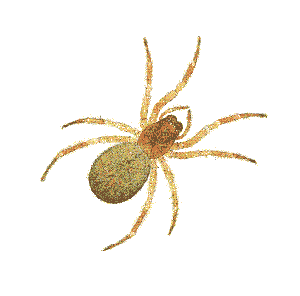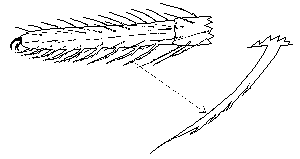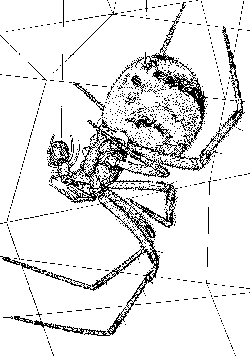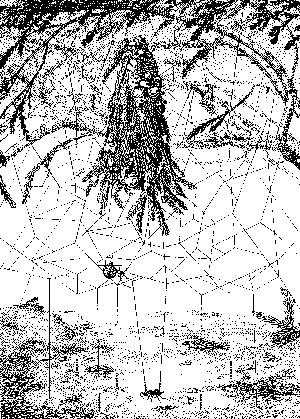Spider of the Month - July
I've chosen from a completely different family, the Theridiidae, for this
month's special - Robertus lividus.
 This
is one of those cryptic species mentioned in contrast with last
month's wolf spider. The British species of Robertus, of which
there are five, are all small, inconspicuous and fairly similar in appearance
to
R. lividus. Our species this month only grows to an adult length
of about 2.5 - 4mm and, like its congeners, lives in the ground layer vegetation,
crawling about in leaf litter, moss, grass, etc.
This
is one of those cryptic species mentioned in contrast with last
month's wolf spider. The British species of Robertus, of which
there are five, are all small, inconspicuous and fairly similar in appearance
to
R. lividus. Our species this month only grows to an adult length
of about 2.5 - 4mm and, like its congeners, lives in the ground layer vegetation,
crawling about in leaf litter, moss, grass, etc.
Robrtus lividus is caught in pitfall traps in a variety of habitats
and at various times of the year. You'd expect it to be a familiar species,
but in fact it can cause problems in identification. Usually, in this part
of the world, some 80% or more of spiders in pitfall catches belong to
the family Linyphiidae - and Robertus looks very much like a linyphiid,
so its very easy to miss the theridiid characters and spend an awful lot
of time (and increasing frustration) trying to find it within the linyphiid
keys and descriptions - until the penny drops and recognition suddenly
dawns!
The Theridiidae are the comb-footed spiders.
On the tarsus of their fourth legs there is a comb made up of a row
of serrated bristles.
So what is this comb for? - as described by Roberts (1985):
Theridiids usually spin an irregular tangle of criss-cross
threads, the latter being sticky on the periphery of the web. Flying insects
hit and break these threads, which contract, dragging the insect to the
centre of the web. In some species the web can become sheet-like. In others
it can be very simple and in others web-building has been abandoned altogether.
The comb on tarsus IV is used to throw further sticky threads over the
prey, which is then bitten.
The poison secreted from the cheliceral fangs of theridiids is very
powerful, although the British species are harmless to man.
However, species from other parts of the world can be very dangerous,
such as Latrodectus mactans - the black widow.

They do have a gentler side, though.
We saw last month how the Pardosa pullata mother cares for her
young, carrying them around on her back.
In this picture, on the left, we can see a Theridion female feeding
one of her baby spiderlings on her web.

The "typical" theridiid does spin a conspicuous web, which can also
be used cleverly to catch crawling insects, as shown in this picture (on
the right):
To be honest with you, I'm not sure what kind of web Robertus
spins. Indeed, I don't even now if it spins one at all.
There are many small spider species living hidden in leaf litter, often
feeding on tiny prey such as springtails (Collembola). How do these hidden
spiders catch their food?
If you have any information on this, I'd
really like to know!
The picture of R. lividus is again from the book by Dr. Mike
Roberts : The Spiders of Great Britain and Ireland, published by
Harley Books in 1985.and the picture of the theridiid web is from The
World of Spiders by W.S. Bristowe, originally published in the New
Naturalist series by Collins in 1958.
 This
is one of those cryptic species mentioned in contrast with last
month's wolf spider. The British species of Robertus, of which
there are five, are all small, inconspicuous and fairly similar in appearance
to
R. lividus. Our species this month only grows to an adult length
of about 2.5 - 4mm and, like its congeners, lives in the ground layer vegetation,
crawling about in leaf litter, moss, grass, etc.
This
is one of those cryptic species mentioned in contrast with last
month's wolf spider. The British species of Robertus, of which
there are five, are all small, inconspicuous and fairly similar in appearance
to
R. lividus. Our species this month only grows to an adult length
of about 2.5 - 4mm and, like its congeners, lives in the ground layer vegetation,
crawling about in leaf litter, moss, grass, etc.



 Ariadne Home Page
Ariadne Home Page